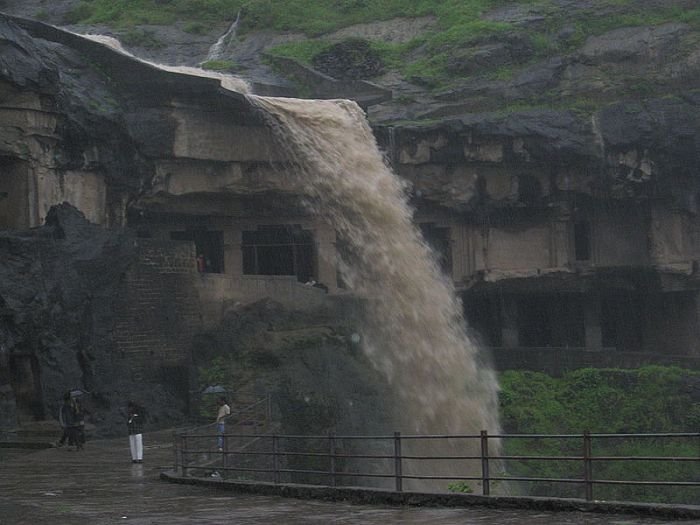|
|
Ellora Caves
|
It was initially thought that the Buddhist caves were one of the earliest structures, created between the fifth and eighth centuries, with caves 1-5 in the first phase (400-600) and 6-12 in the later phase (mid 7th-mid 8th), but now it is clear to the modern scholars that some of the Hindu caves (27,29,21,28,19,26,20,17 and 14) precede these caves. The earliest Buddhist cave is Cave 6, followed by 5,2,3,5 (right wing), 4,7,8,10 and 9. Caves 11 and 12 were the last. All the Buddhist caves were constructed between 630-700.
These structures consist mostly of viharas or monasteries: large, multi-storeyed buildings carved into the mountain face, including living quarters, sleeping quarters, kitchens, and other rooms. Some of these monastery caves have shrines including carvings of Buddha, bodhisattvas and saints. In many of these caves, sculptors have endeavoured to give the stone the look of wood.
Most famous of the Buddhist caves is cave 10, a chaitya hall (chandrashala) or 'Vishvakarma cave', popularly known as the "Carpenter's Cave". Beyond its multi-storeyed entry is a cathedral-like stupa hall also known as chaitya, whose ceiling has been carved to give the impression of wooden beams. At the heart of this cave is a 15-foot statue of Buddha seated in a preaching pose. Amongst other Buddhist caves, all of the first nine (caves 1–9) are monasteries. The last two caves, Do Tal (cave 11) and Tin Tal (cave 12) have three stories.
|
|









